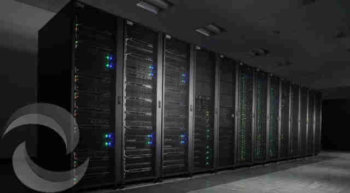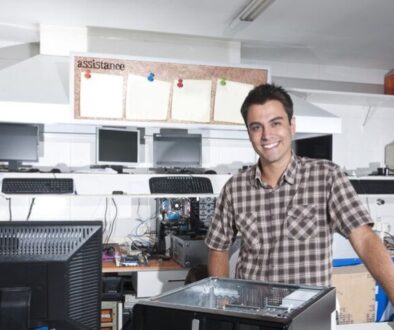IBM Unveils AI Workload Optimized Chip and Server
AI or Artificial Intelligence is not the future anymore- it is the present! The first AI driven robot with a citizenship, Sophia, is now known to advocate female rights in Saudi Arabia. When developments like this are going on, it is inevitable that we will see many innovations and technological advances in the field of AI.
Recently, IBM has hopped on the bandwagon unveiling hardware and software solutions optimized just for AI. The lineup includes processors, servers, and even open source codes to develop AI applications.
POWER9 Chip: Driving Force for AI
IBM released the POWER9 chip geared for the demanding industry of AI, which is capable of running huge volumes of data at breakneck speeds. The chip is the product of genius engineering and advanced technology, well suited for running AI processes.
Years back, IBM took on the challenge to develop a new platform based on Linux. It would be able to manage algorithms and streaming sensors for data driven AI and machine learning along with harnessing free-flowing data.
POWER9 is the result of that endeavor and comes with considerable advantages. It offers a significant increase of bandwidth and the accelerators and processors can simultaneously compute data effectively.
The chip increases the bandwidth by up to 2 times through which one can quickly access more data, said Dipankar Sarma, engineer with IBM System’s Linux Technology Center. He also thinks the chip is the only of its kind, allowing it to compute data 5-10x faster.
The chip can be used in many applications which require such data processing power. Dipankar suggested two possible scenarios which can utilize the chip: ecommerce where a user takes a picture of a product and uses it to search for availability online. The system will make the complicated search process easy by allowing more data quickly, reducing the time necessary for machine learning and deliver reliable results.
Dipankar also spoke of another scenario where the technology can be used to detect credit card fraud. Social media uses geolocation to tag the users when they use check-in at some place. The data can be related with your bank data to reveal if there has been any fraudulent use in some other place.
According to Dipankar, the system is capable of handling structured data from net banking and credit card transactions, along with huge amount of unstructured data generated by social media. It can quickly relate the two and come up with a model to identify fraud.
IBM AC22 Server: Optimum for Running Intensive AI Workloads
IBM has also unveiled a brand new server integrating the POWER9 chip designed for running computing-intensive workloads. The server will benefit deep learning frameworks by reducing the training times by up to 4x, enabling developers to create high performance AI applications in less time.
Deep learning workloads and AI will be revolutionized with the IBM Power Systems Servers, expressed Viswanath Ramaswamy, IBM Global Markets, Systems HW Sales, Systems (India/South Asia). He believes the cutting edge processors deliver unmatched cognitive capabilities and can help enterprises of all levels to transform and upgrade their machine learning and AI applications.
Deep learning is a technique of machine learning which is being increasingly used in AI applications. It involves analyzing huge amounts of processes and data to identify and highlight the most crucial aspects of the said data.
The AC922 server with POWER9 chip for the first time embeds OpenCAPI, next-generation NVIDIA NVLink and PCI-Express 4.0. With the combined capability the system can boost data movement up to 9.5 times faster compared to x86 systems utilizing PCI-E 3.0.
When compared to x86, the AC922 is 4 times more efficient when it comes to training time of deep learning frameworks, revealed Viswanath. As a result, one gets faster performance with 10 times bandwidth acceleration.
The combination of PCI Express 4.0, OpenCap and NVIDIA NVLink is utilized only in the AC922, said Viswanath. The product offers unprecedented acceleration for high performance computing, demanding AI processes, and accelerated database workloads.
Both the POWER9 chip and the AC922 are expected to be commercially available by the beginning of 2018.
Google Shows Interest!
The new releases from IBM have been winning some applause from all over the world. Recently Google couldn’t help holding back its appreciation.
VP of Google Platforms, Bart Sano, expressed that they were excited about IBM’s development. He thinks that the Google data centers can create meaningful innovations with the huge memory capabilities of the POWER9 OpenCAPI Bus.
It’s not just Google. The POWER9 chips will soon drive supercomputers like Sierra and other data-intensive supercomputers.
Code Patterns for AI
IBM is not limited to just introducing hardware for AI; it has also released free open-source codes for managing applications involving AI, blockchain, analytics, microservices, and other areas.
The code patterns are meant to streamline the processes involved in the applications. IBM Code Patterns have offered more than 120 reusable code patterns, documentations, GitHub repos, and other tools which reveal the underlying code snapshot. Developers can also access process flows and architecture diagrams so that they can quickly get down to work instead of scavenging through unlimited documentation and code bases.
IBM has also come forward with their Bot Asset Exchange for enterprises. It will help develop AI bots by using conversation logic customized for specific domains. The tool can be utilized to develop bots, IoT applications, chatbots, and virtual reality systems.
The codes can be downloaded from the websites of the respective agencies.
IBM has gone far ahead of others with their new POWER9 chip and AC922 server, bringing a new level to AI. Following the line of industry leaders, the company has also helped others to come up with their own innovations using the products and the open-source code patterns. It will help enterprises, scientific researchers, and developers create applications quicker and form deep insights from a huge load of free-flowing data.





